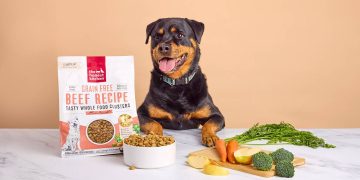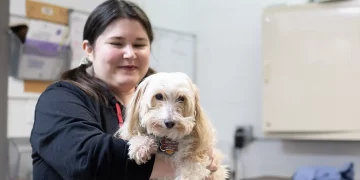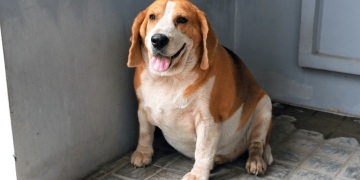Feeding the Future: The Fine Line Between Nourishment and Overload
Puppyhood is a whirlwind of growth, mischief, and transformation. In a matter of months, that tiny, wobbly creature becomes an energetic adolescent, brimming with potential. As owners, we want to support that growth—after all, nutrition is the fuel for strong bones, shiny coats, and playful personalities. But when it comes to feeding, more isn’t always better. Overfeeding during a puppy’s critical growth spurts can have lasting consequences that go far beyond a chubby belly.
Puppies require a precise balance of calories, protein, fats, and micronutrients to support their rapidly developing bodies. But giving them more food than they need, especially in an effort to “bulk them up” or match an idealized growth chart, can lead to a cascade of health issues. These include skeletal deformities, obesity, poor joint development, and even shortened lifespans in some cases.
Growth spurts may seem like the perfect time to loosen the feeding rules, but in reality, this is when nutritional discipline matters most. Feeding habits during this window can determine how well your dog moves, ages, and thrives for years to come.
Calorie Overload vs. Healthy Muscle Gain
One of the most common misconceptions among new dog owners is that a growing puppy needs to eat as much as it wants to ensure proper development. While it’s true that puppies burn a significant amount of energy—especially during teething, growth spurts, and high-activity phases—this doesn’t mean unlimited access to food is safe.
Puppies that consume excessive calories don’t just grow bigger—they grow faster than their bones and ligaments can support. Rapid weight gain puts a strain on developing joints and can predispose dogs to orthopedic conditions like hip dysplasia and osteochondritis dissecans (OCD). These are painful, degenerative diseases that can severely impact a dog’s mobility and quality of life, often requiring surgery or lifelong management.
Healthy muscle gain comes from a combination of age-appropriate exercise, adequate sleep, and balanced, portion-controlled nutrition. It develops over time, guided by the dog’s natural growth rhythm. In contrast, overfeeding accelerates growth unnaturally—especially in large and giant breeds—and causes puppies to outpace their skeletal integrity. This can distort posture, widen joints abnormally, and lay the foundation for obesity before the dog reaches its first birthday.
Understanding Growth Spurts: Peaks and Patterns
Puppies don’t grow in a straight line. Growth happens in spurts, often unpredictably, and is influenced by genetics, breed, environment, and diet. During these spurts—usually around 3 to 6 weeks, 8 to 12 weeks, and again at 4 to 6 months—your puppy’s appetite may increase noticeably. But even then, moderation is essential.
Small breeds grow rapidly but reach full size earlier, often by 8 to 10 months. Medium breeds continue growing until 12 to 14 months. Large and giant breeds can grow for up to 18–24 months, with most of that growth concentrated in their first 9 months. Each breed group has its own metabolic pace, and feeding plans should align accordingly.
During growth spurts, puppies may appear lanky, awkward, or suddenly hungry all the time. This is normal. What’s not normal is ballooning weight gain, constantly soft stools, or visible fat pads along the ribs, spine, and hips. These signs indicate that your feeding schedule—or the food itself—may be too caloric.
Portion size should be based on a puppy-specific formula or food label guide, adjusted every two weeks as your puppy gains weight. High-protein, moderate-fat formulations with the correct calcium-to-phosphorus ratio (typically 1.2:1 for growing dogs) are ideal. Don’t fall into the trap of free-feeding unless directed by your veterinarian for medical reasons.
Breed-Specific Growth Considerations
Feeding during growth spurts isn’t a one-size-fits-all scenario. A Chihuahua puppy and a Great Dane puppy have dramatically different caloric needs and risks.
Small breeds (like Yorkies, Maltese, or Pomeranians) have high metabolisms but small stomachs. They require energy-dense meals split into three or four portions daily to avoid hypoglycemia—but they’re also easy to overfeed. Their growth spurts are shorter, and overfeeding often leads to dental crowding, joint strain, and adult obesity.
Medium breeds (like Cocker Spaniels or Border Collies) benefit from steady, even growth. They may not be as fragile as small dogs, but they still face risks from excess weight—especially if neutered or spayed early, which lowers metabolism.
Large and giant breeds (like Golden Retrievers, German Shepherds, or Mastiffs) are particularly sensitive to overfeeding. Rapid growth from too many calories—especially excessive calcium and phosphorus—can lead to hypertrophic osteodystrophy, elbow dysplasia, and long-term joint instability. These dogs must be kept lean during growth, often requiring large-breed puppy formulations with controlled energy density.

Your veterinarian or breeder should provide a growth curve target—either in weight or height—to track development. Falling above the curve may indicate overfeeding, while falling below could mean undernutrition or medical issues.
The Early Roots of Obesity and Joint Damage
Puppy fat may look cute, but its consequences are long-lasting. Overfeeding during the first year of life increases the number and size of fat cells in a dog’s body. These cells don’t disappear—they persist into adulthood, making weight management far more difficult later on. A puppy overfed in youth may always be prone to obesity, even on a normal adult diet.
Moreover, joints under pressure during development never fully recover. The cartilage between bones is still soft in puppies, and excessive weight can cause this tissue to deform or wear unevenly. As your dog ages, these imperfections turn into arthritis, pain, and reduced mobility.
Studies show that dogs kept at a lean body condition throughout their lives live on average two years longer than their overweight peers—and with better mobility and fewer chronic illnesses. The foundation for that longevity is built in puppyhood.
Monitoring, Adjustment, and How to Know When Enough Is Enough
So how do you strike the right balance? Start with your puppy’s body condition score (BCS), a scale from 1 to 9 used by vets to evaluate body fat. A healthy puppy should be around 4 to 5 on the scale. You should be able to feel—but not see—ribs with light pressure. The waist should be visible from above, and there should be a gentle tuck behind the ribcage when viewed from the side.
Weigh your puppy weekly, and adjust portions based on changes in appetite, energy levels, and growth trends. Growth charts provided by breed organizations or your vet can help you stay within healthy targets. If your puppy skips a meal or seems less enthusiastic during a growth spurt, don’t panic. Let their appetite guide small increases in food—not your assumptions.
Avoid “treat creep.” Overfeeding often happens through excessive training treats or chews. Use high-value rewards sparingly and subtract treat calories from your puppy’s daily intake. Low-calorie treats like carrot slices, freeze-dried liver, or kibble from their meal portion can support training without overfeeding.
Exercise matters too—but don’t push a growing puppy with high-impact activities like jogging or stair running. Controlled play, walks, and mentally stimulating games help build muscle safely.
Conclusion: Growth That Lasts a Lifetime
Feeding a puppy during its growth spurts is about more than satisfying hunger—it’s about building a foundation for a healthy, mobile, and happy life. While it may be tempting to indulge a ravenous pup or believe that rapid size gain means strong development, the truth is far more nuanced.
Overfeeding during growth spurts leads to poor joint alignment, early-onset obesity, and chronic disease. But a well-balanced, portioned diet tailored to your puppy’s breed, size, and activity level can ensure strong bones, lean muscle, and a better shot at a long and vibrant life.
The most responsible thing a new dog owner can do isn’t just to feed with love—but to feed with knowledge.























































